10 days of winter landscape and aurora photography in Iceland
Report of a 10-day winter roadtrip across southern Iceland, with tips and tricks, food recommendations, and a few photography spots.
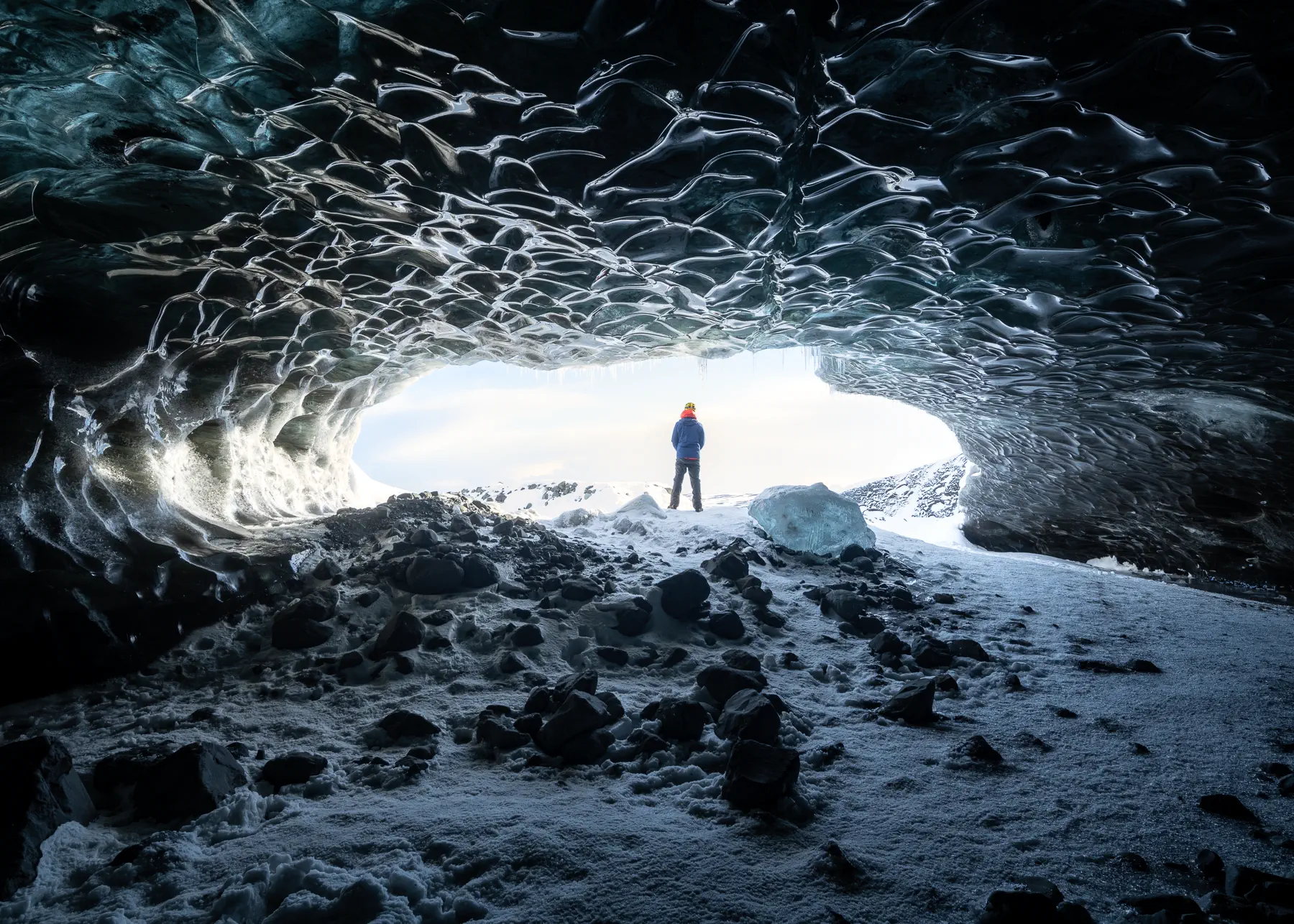
Self-portrait in an ice cave of the Vatnajökull glacier
I recently travelled to Iceland for just over a week of landscape photography, mainly centered around chasing the Northern Lights, but also in hopes of capturing certain of the landscapes from a trip taken the previous summer, but in winter dressing. This article contains a non-exhaustive list of places, towns, and even restaurants that we visited during our time in Iceland, in the hopes that it might help you plan a trip of your own in the future.
Iceland is a surprisingly large country, with one main “ring” road, Route 1, encircling it. It can generally take several days just to drive this road, and a complete tour of the country at a more reasonable pace normally requires a minimum of about 2 weeks.
Because of this, I chose to focus on the south of Iceland for this itinerary. This is the most-visited area in the country, and is where most of the popular sites are located. Now, the North is spectacular, don't get me wrong, but I'd rather travel the South at a slower pace and optimize my chances of getting the best possible light in my favourite locations.
My approach to trip planning generally involves building a list of locations to shoot. This is the time to go through Instagram, r/EarthPorn, watch YouTube videos, and scour the internet for articles like the one you're reading. I usually save the locations in Google Maps so I can easily visualize them on a map.
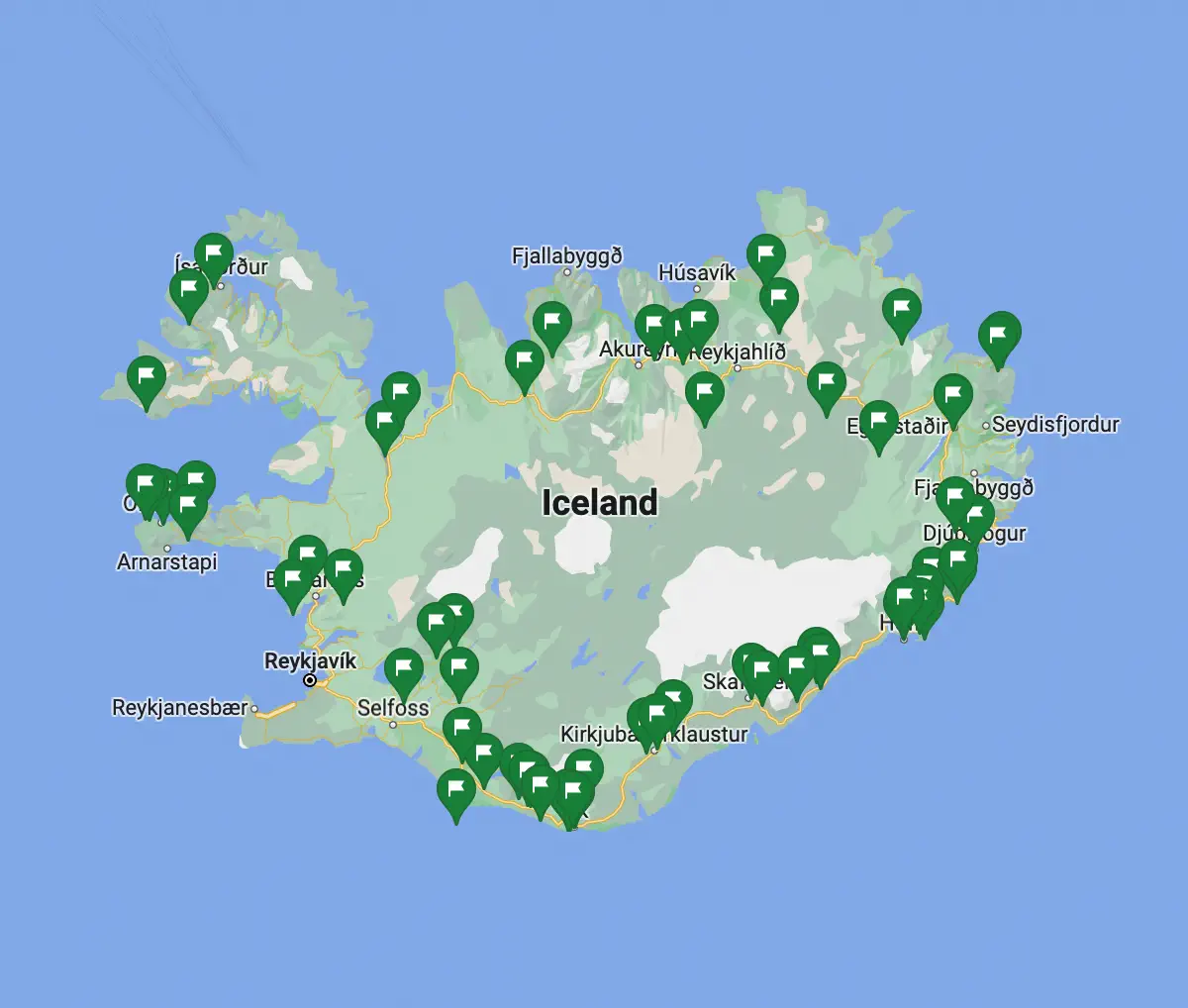
From there, I pick 2 to 4 main locations, or “bases”, where I'll stay. Some people prefer moving to a new location every night as they explore the country, but I like getting to know my locations better, and I especially hate packing and unpacking everything every day, dealing with early morning shoots and early check-outs, and never having time to breathe a little. In Iceland, we stayed in 3 locations: 3 nights in Reykjavík, 4 nights in Höfn, and 3 nights in Vík.
Arriving in Iceland
If you're flying into Iceland from North America, which is where I'm located, your flight will probably land at Keflavík Airport in the early morning around 07:00, or earlier. Some people will sleep on the flight and be reasonably rested on arrival, but I just don't sleep on planes, and besides, it was only 23:00 in my local time zone (Pacific Standard Time) when I landed.
This being said, I was also not going to try to stay awake until the evening, or even until check-in time at the hotel. My strategy in this situation is to book a hotel for the night before, so the room is ready in the early morning on arrival. If you want to feel safe about this, just advise the hotel ahead that you'll be arriving very late.
Car rentals
There are several ways to travel around Iceland. Many people opt for organized tours, but I've always rented cars. Car rentals are quite... particular in Iceland, and so for the moment I will refrain from discussing this topic as it probably deserves an entire blog post on its own. Rental companies typically offer a complex web of expensive insurance packages on rentals, different from insurance in other countries, and it's often very difficult to know what options to choose. It's a system that still confuses me, even after several rentals.
Reykjavík
Our first stay was in Reykjavík, the capital and largest city of Iceland, home to about two thirds of the country's population. Some people will prefer heading into the countryside immediately, but I enjoy staying near the airport and near a major city for a few nights in the beginning. It's a good way to beat jet lag, take it easy, and go over any last-minute preparations. If something is missing, or something broke, it can be replaced or fixed. For example, my friend picked up an extra battery for his drone at the local DJI store.
I also use Reykjavík as a “central” base to many photography locations in the area. Granted, those locations still require a fair amount of driving, but we won't be able to reach them from any of the other bases in the trip.
For this leg of the trip, we stayed at Grand Hotel Reykjavík.
Kirkjufell
The pretty unique-looking Kirkjufell is located quite a long drive north of Reykjavík but it is an epic place to go shooting at just about any time of day, but especially when the lights are out.
Since the spot is actually quite far from most other “popular” landscape photography spots, and after I'd heard that the weather is often non-cooperating around the mountain, I had decided to keep it on the backburner and that we'd drive up to it only if conditions were optimal. And when everything lined up, on our last evening in the capital, we did exactly that, and made the 5+ hour round-trip trek for a single evening shooting Kirkjufell.
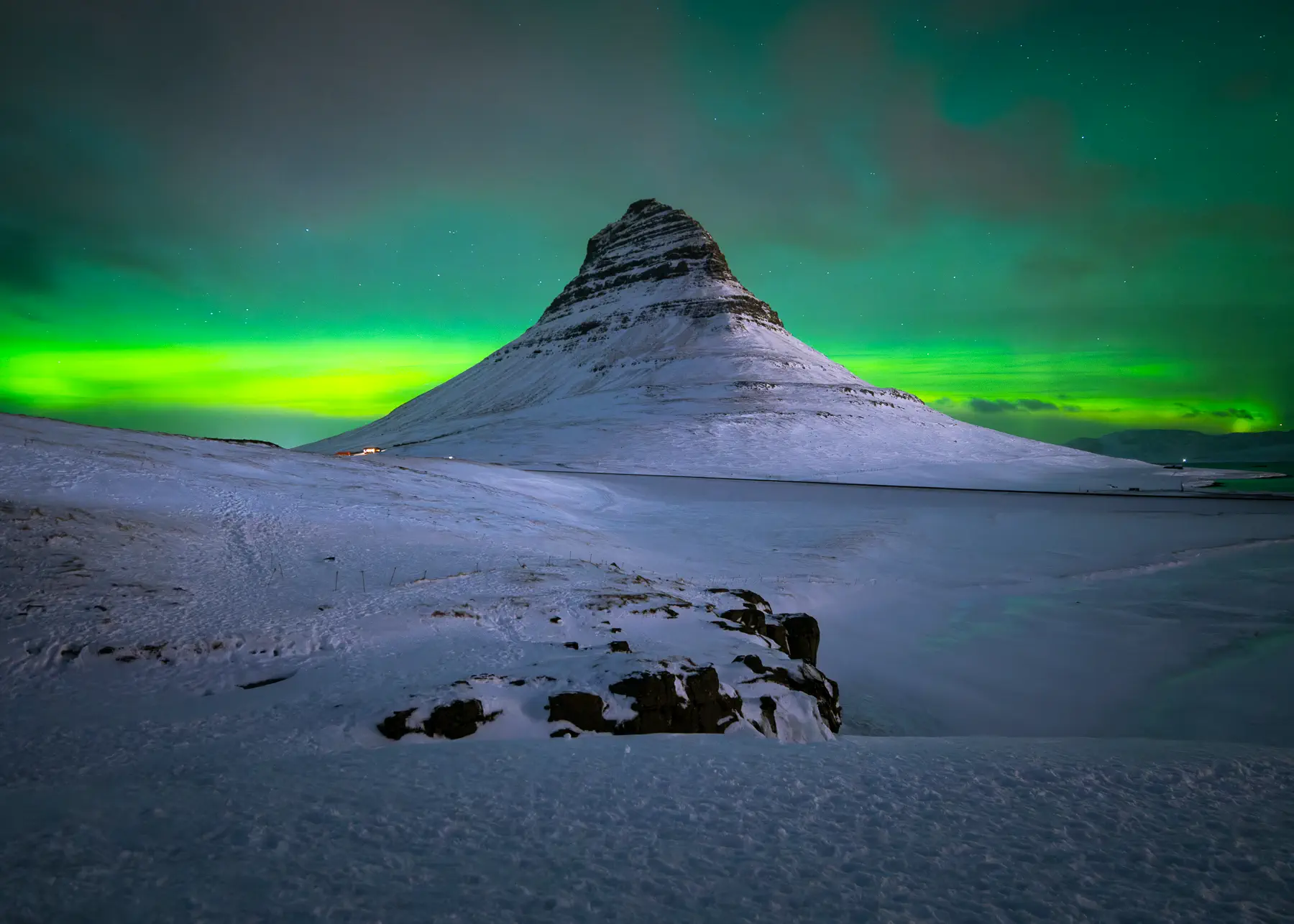
A shy aurora hides behind Kirkjufell.
There are a few interesting photo spots around Kirkjufell as well, notably Búðakirkja, “the black church,” but roads were in too poor conditions to risk driving there, so we decided to push this to a later trip.
Geysir, Brúarfoss, and other waterfalls
Roughly an hour and a half from Reykjavík is where the world-famous Geysir is located. As you might have guessed it, Geysir is a geyser. Unfortunately, Geysir has been rather quiet in recent years, so you'll have to make do with the nearby Strokkur and other smaller geysers in the area.
The region around Geysir is also home to a couple waterfalls, including Gullfoss. Gullfoss can however be rather difficult to photograph, so I prefer hiking up to Brúarfoss instead.
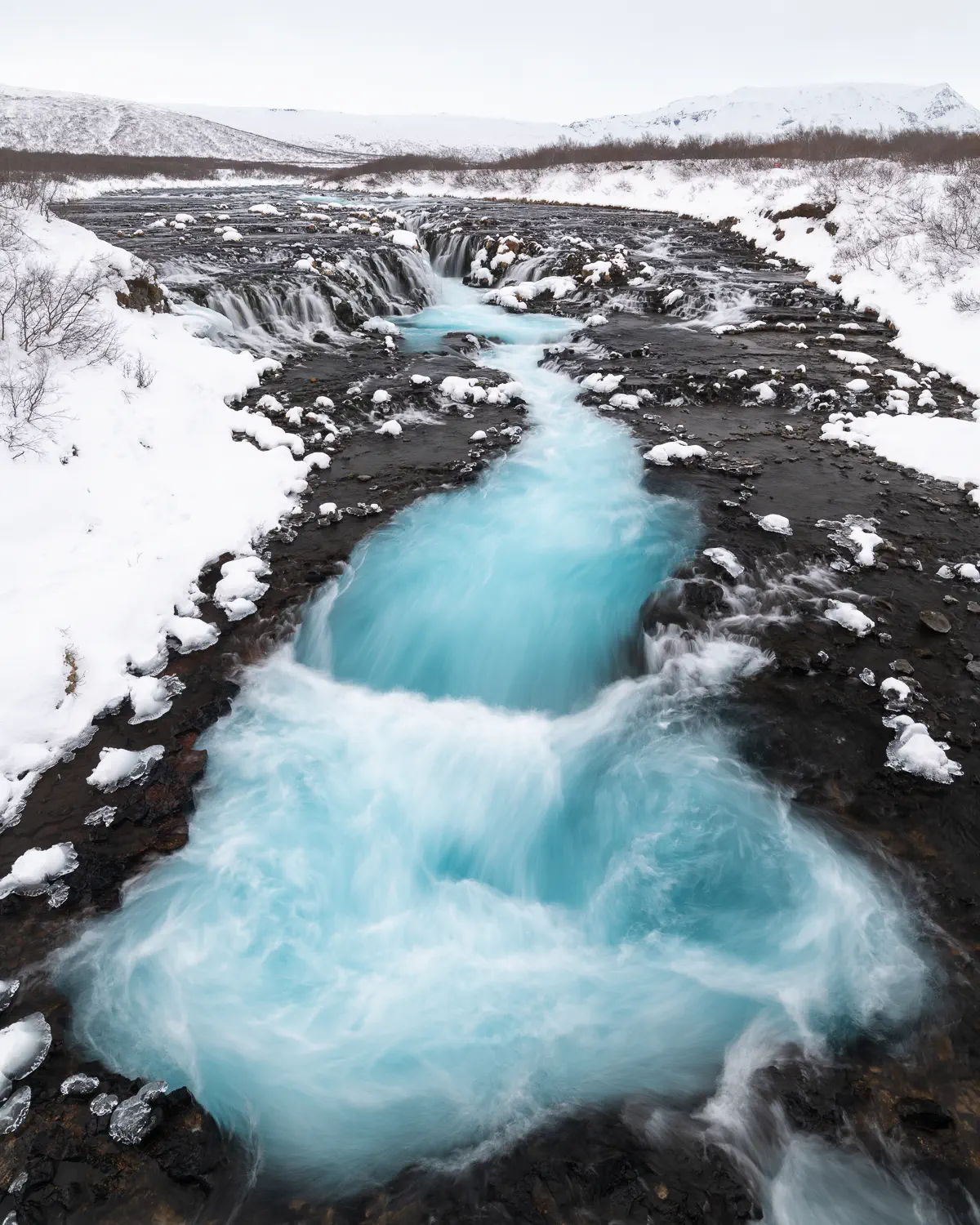
The glacial blue waters of Brúarfoss.
From the Brúarfoss parking lot (there are roads but they are part of a gated community), you will need to hike roughly 3 kilometres along a river to a wooden bridge. From there, the waterfall can be photographed from several angles, with wide-angle and telephotos alike. To obtain water that has the right balance between smoothness and texture, I recommend a shutter speed between 1/6 and 1/3 seconds.
Where to eat
- Fish Company: A restaurant that serves typically Icelandic tasing menus, with a great interior and great service. We stopped there for lunch and weren't disappointed. Reservations may be required.
- Matarkjallarinn: We showed up at random without a reservation into this place with a wonderful ambience and enjoyed 4 courses of delicious Icelandic cuisine.
Höfn
Höfn is my favourite small town in Iceland. It's a coastal community surrounded by jagged peaks and is near some of my top photography spots.
A six-hour drive from Reykjavík, few tourists will reach it, especially in the winter; the road to Höfn crosses several coastal plains and can become extremely dangerous and slippery on days of adverse weather. The day of our drive between Reykjavík and Höfn, we encountered wind speeds nearing 160 kph (100 mph). I would not recommend doing this drive unless you have extensive experience driving in extreme winter conditions.
Due to the sheer distance and the unpredictable nature of the Icelandic weather, I would recommend planning several days between the end of your stay in Höfn and your return flight from Keflavík, as there's no way to accurately predict how long the drive back will last. I opted to stay in Vík for a few days between our visit to Höfn and the time we left Iceland.
When in Höfn, we stayed at the Aurora Cabins.
Vestrahorn
Vestrahorn is an extremely popular location to visit for photographers that make it to this part of Iceland. It's not uncommon to see pictures of its jagged peaks on tourism ads promoting the country.
People generally drive to Stokksnes (entry fee: ISK900/CAD8/USD7 per person), the peninsula to the south that offers the best views of Vestrahorn. From there, sand dunes, rocks, a large black sand beach, and in the summer, lupins, can be used as foregrounds for landscape photography. I personally love using the waves crashing against the beach in my foreground.
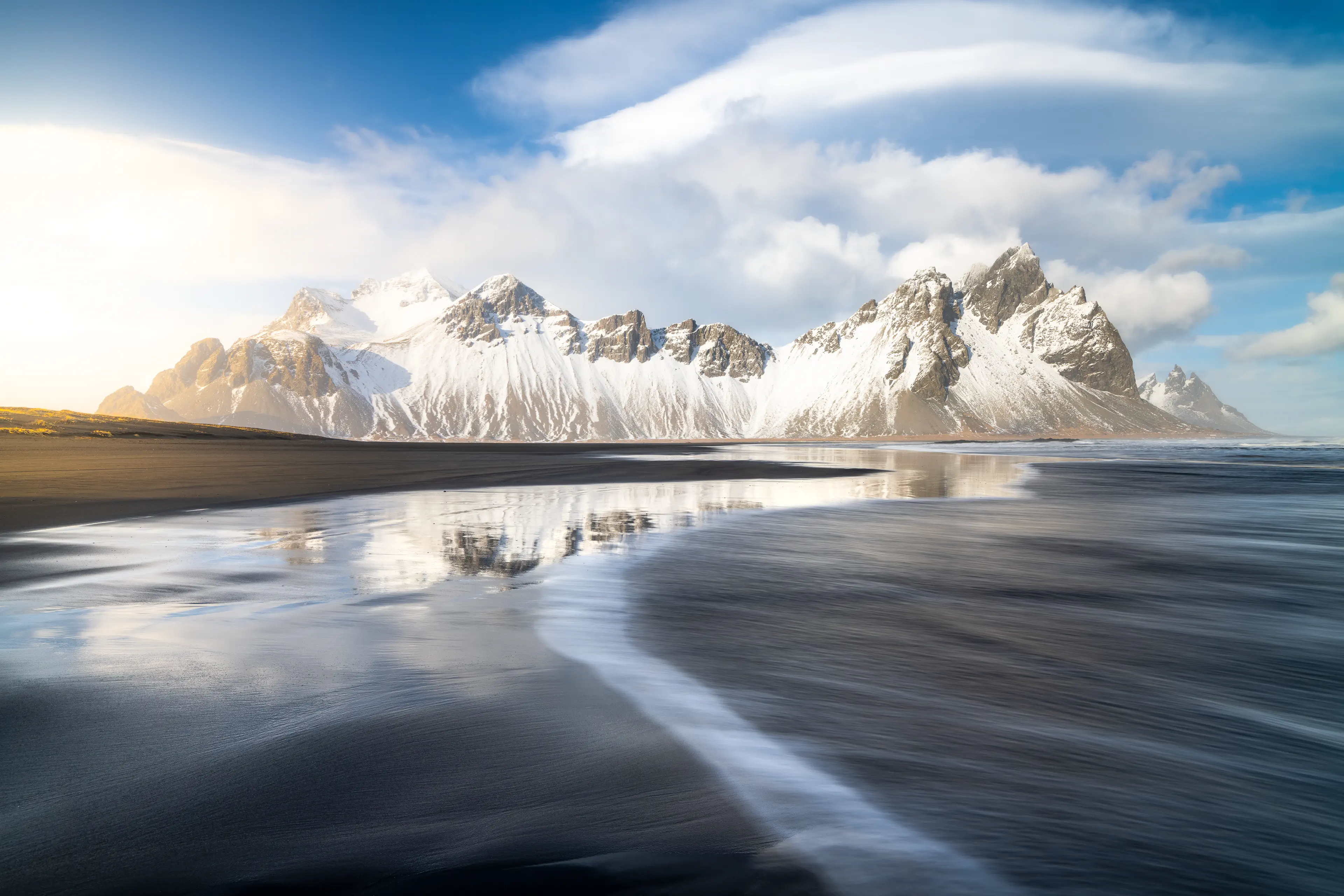
Waves crashing on the beach near Vestrahorn. Waterproof bottoms are highly recommended.
Proper waterproof gear (boots, waders) will be required to go on the beach. And remember, this is an oceanic beach, and occasionally large waves can creep in. You should not leave any of your gear on the ground while shooting on the beach, and ensure your tripod is well-anchored against lateral forces.
In the winter, Vestrahorn is lit up by the sun from sunrise to sunset, and the soft winter daylight means you can shoot at just about any hour. At night, the scene is perfectly aligned to the north so it's very common to catch an aurora display above the mountain. A wide-angle lens is recommended; the scene fits pretty snugly on my 18mm, and sometimes I wouldn't mind having a slightly wider field of view, especially to get myself closer to the massif.
Eystrahorn
A further 40 km drive east on the Ring Road lies Eystrahorn, Vestrahorn's lesser-known cousin. There is another small peninsula called Hvalnes from where foregrounds such as a lighthouse, reflection pools, rocks, and many more abound. We visited several times during our stay in Höfn, and we usually had the whole place to ourselves.
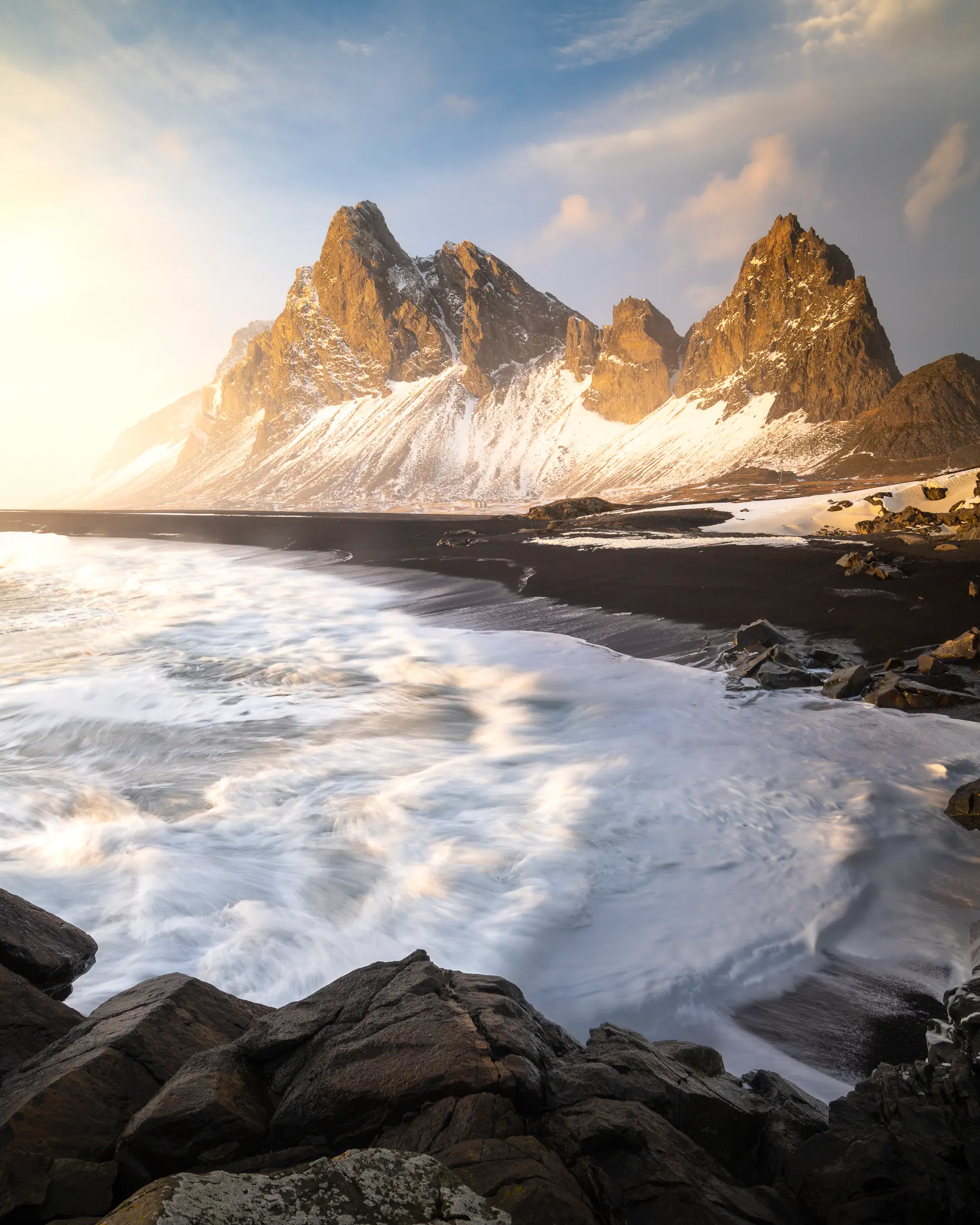
Violent seas near Eystrahorn. Getting on the rocks can be fairly dangerous, so ensure you only set up in completely dry areas.
Here again, a wide-angle lens is recommended, and my 18mm lens was just perfect for both horizontal and vertical shots. At night, the mountain is not perfectly aligned to the north like Vestrahorn, but it's still not uncommon to catch the lights dancing above Eystrahorn. There is no fee to access the peninsula.
The Ice Caves of Vatnajökull
75 kilometres west of Höfn lies the famous Jökulsárlón, a large glacial lagoon in which pieces of the glacier Vatnajökull break off and float into the Atlantic ocean. From there, it is possible to go visit an ice cave at the base of the glacier, forged by small water streams under the sheet of ice. This is the most well-known ice cave in Iceland, although others can be found elsewhere on Vatnajökull and around the country.

Trying to sneak a self-portrait in between the hordes of tourists.
It's generally not a good idea to go visit the cave by yourself as the road there requires a more than capable vehicle; you should instead book one of the tours that depart Jökulsárlón aboard large custom-built 4x4 vans. Most tours include close to two hours of round-trip driving (not recommended for those suffering from motion sickness), a short hike, and up to an hour in the cave. There are several operators to choose from; we opted to go with Arctic Adventures, but most operators run very similar itineraries in very similar vehicles.
Diamond Beach
Diamond Beach is a very popular winter destination among landscape photographers but we did not visit it at the optimal time for photography. The beach is where highly polished chunks of ice from Jökulsárlón wash up, and where photographers capture the sun rising over the Atlantic ocean. You can find it across the road from the parking lot to Jökulsárlón.
The geography of the beach, facing completely south, makes it impossible to observe the sun rising or setting over the ocean during the summer months, and winter is a preferable time to photograph Diamond Beach. Naturally, more ice chunks will also be present at that time.
As I said, we did not make time to photograph Diamond Beach, but the optimal time for photography during the winter months will be around sunrise.
Where to eat
- Hotel Höfn: A cozy hotel offering fancy seafood meals. I highly recommend the lobster feast if you don't mind splurging on it, or the lobster soup if you're on a budget. Some friends of mine also love the lobster pizza.
- Z Bistro: A cozy bistro serving homemade food, with generous amounts of seafood.
Vík
For the last leg of our trip, we stayed near the town of Vík í Mýrdal; Vík for short. Being a three-hour drive from the airport on roads that are generally better maintained, Vík was a safer place to stay to ensure we wouldn't miss our late-afternoon flights on the last day of our Iceland trip.
Unfortunately, our time in the area was mostly marked by rather cloudy and grey weather, so we didn't have a chance to shoot in the best conditions. Furthermore, the stormy weather (which was kinda cool to look at, not gonna lie) meant we had to stay relatively close to the car to avoid getting hailed on and/or blown away by wind.
Our accommodations in Vík were the Black Beach Suites.
Skógafoss
Skógafoss is, in my opinion, one of the better-looking waterfalls of Iceland. Its face is nice and rectangular and there are many options to choose from when it comes to foreground elements. The only downside is the crowds, making it hard to frame a shot without anyone getting in the way. You may have better luck at sunrise, but the only way I was able to get a shot was by either stepping into the river, or by getting so close water droplets would fog my front element.
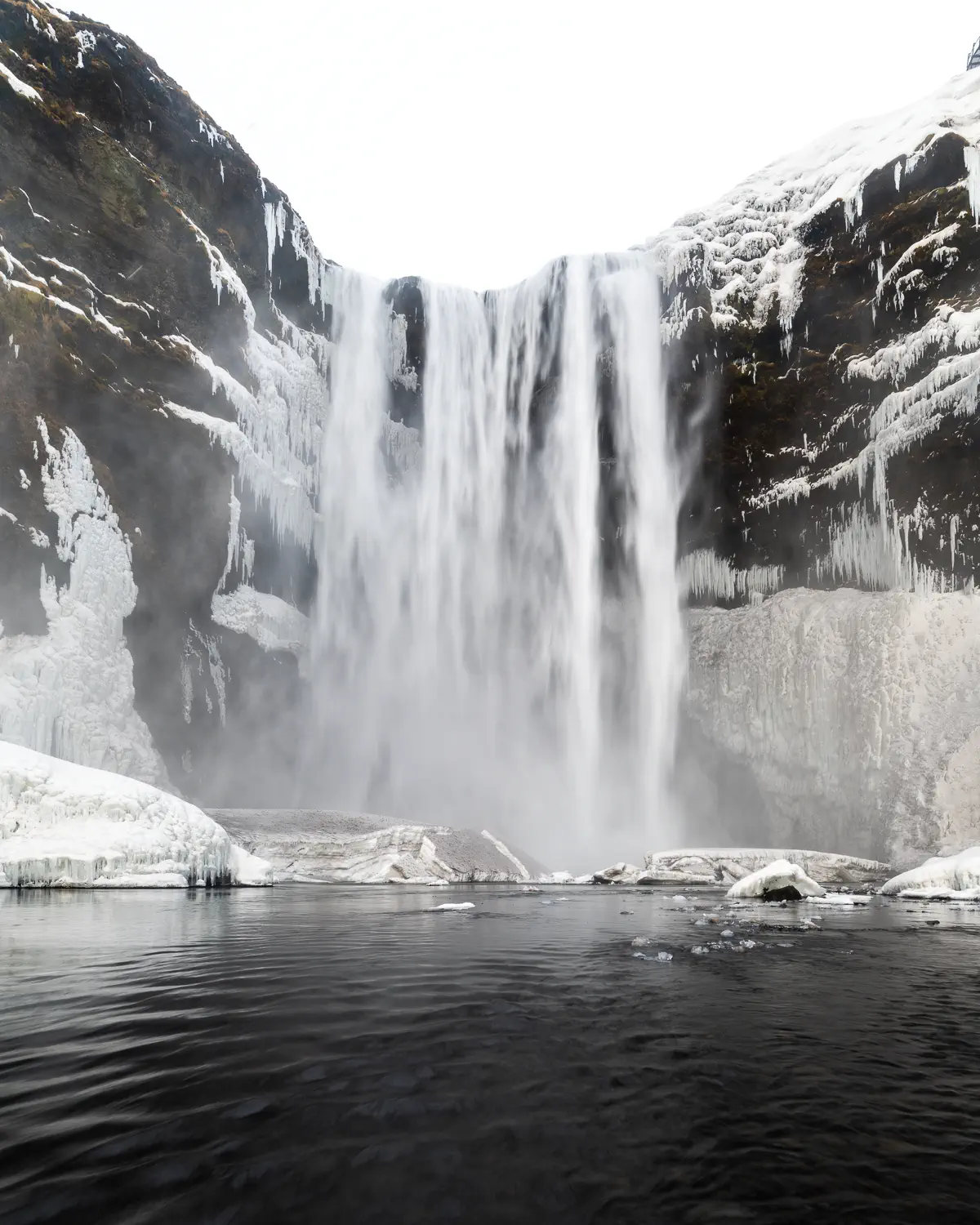
Skógafoss on a very grey day.
Skógafoss can be catured from up close with a wide angle lens, or you may choose to step back with a telephoto lens and ask a friend to stand by the waterfall for scale. At night, the scene points northwards, so it's a great spot to shoot the aurora, if your luck is better than mine and you have clear skies.
Seljalandsfoss
Another iconic waterfall of Iceland is Seljalandsfoss. Many summertime photos will be taken from behind the waterfall, which is accessible outside of the snowy season. In the winter, the path is blocked, and it's generally not safe to step under the giant icicles that surround it.
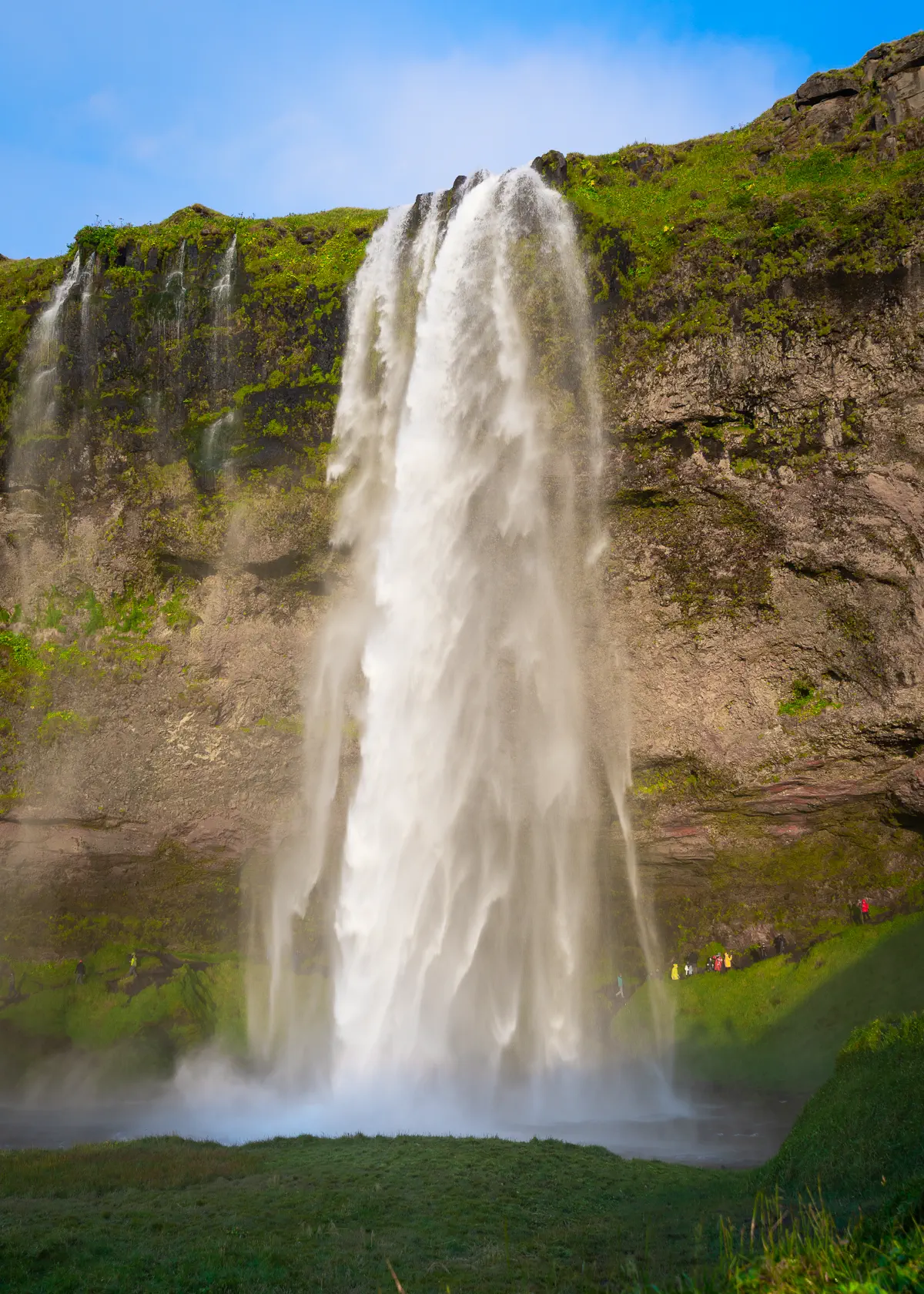
Seljalandsfoss during a late-summer trip, in September 2018.
Where to eat
- Suður-Vík: Great little restaurant on a hill overlooking Vík serving homemade Icelandic food.
Chasing the aurora
The good news is, at least in my experience, the aurora can be seen almost every night in Iceland provided there are clear skies. It's not always strong, but you'll see some green, or at least the camera will capture it. Most often the lights will start showing up anywhere between an hour or two after
I use a combination of several apps to track the aurora. The most accurate is SpaceWeatherLive (there are apps to go along the website), as it tracks solar flares and gives very good approximations of your probability of seeing something on any given night. The most user-friendly is probably My Aurora Forecast (iPhone app) as it gives you an easy-to-read map of where the aurora is at any given moment.
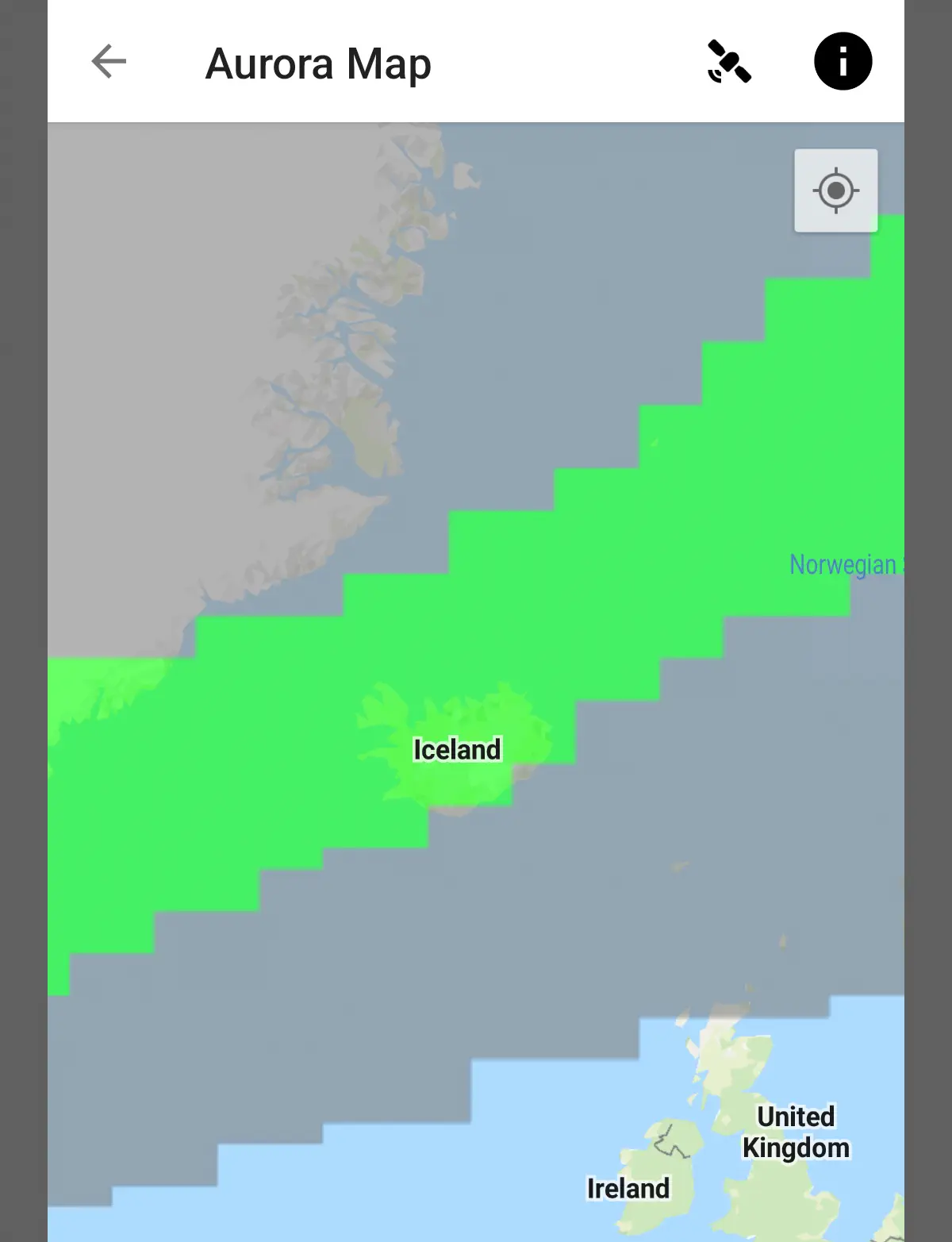
Northern light area in green over Iceland in the early morning.
To predict cloud patterns and find clear skies, we mainly used Windy.com (areas in dark yellow indicate clear skies), for current cloud cover data but also for short-term forecasts. Thanks to this, we were able to be in Kirkjufell at exactly the right moment to capture the lights.
The Icelandic Met Office can also be an excellent source to predict cloud cover, although the interface is less than ideal and the map is much less detailed. Make sure you use the tabs above the map to check for low, mid and high clouds.
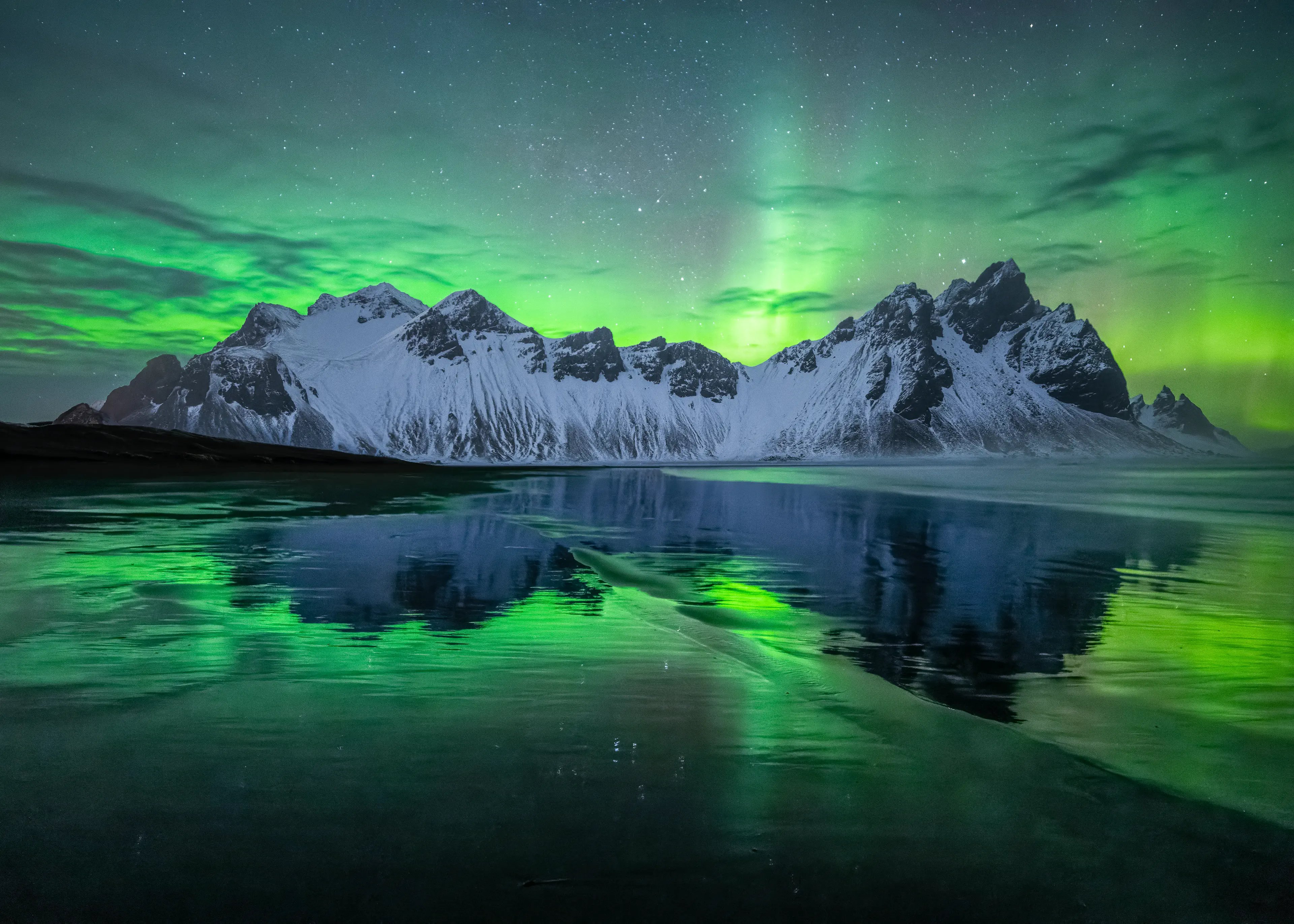
f/2.8, 8.0 seconds, ISO 4000 on a Nikon D850 + Zeiss Milvus 18mm f/2.8 ZF.2
Once the aurora shows up, it's time to shoot! Have your lens set on the widest aperture, and remember, aperture is expressed as a fraction, so you'll want the lower number for the maximum aperture (e.g. f/2.8 is higher than f/11). Shutter speed should be set to taste; faster speeds will offer more defined shapes in the aurora but will also require more compensation, and more noise, from the ISO side.
What to bring
Iceland is a cold, cold country, especially in the winter, and you shouldn't show up without the right gear, and you should budget extra money on gear if you don't already own anything suitable. The usual winter temperature will be just below freezing, but it could go down to -40˚C/-40˚F on very cold and windy nights. Winds can reach nearly 200 kph (125 mph) when the frequent and massive Atlantic storms slam directly into the island.
- Warm winter clothes: This goes without saying. Think a hard shell, a very warm down jacket, overall weatherproof clothes (jacket, pants, gloves). Among others, I have a Patagonia Fitz Roy down hoody.
- Footwear: You may want to bring moderately warm hiking boots for longer hikes, but you should also bring a proper pair of winter boots, especially if you're planning on standing on the beach shooting Vestrahorn. Hiking boots most likely won't keep you warm if you're standing in the cold for hours. I have a pair of Arctic Sport Mid Muck Boots.
- Hand warmers: Hand warmers are disposable chemical packets that become very warm when exposed to air, and last from 8 to 12 hours, dispensing heat. Again, very useful to put in your gloves when spending hours shooting sunrise in the cold.
- Spikes/crampons: Those are extremely important. Walking and hiking in snowy and icy areas can get very dangerous, very quickly. Spikes are lightweight, fit on almost any boot, and will give you far better traction on just about any surface than the underside of your footwear. I own a pair of trusty Kahtoola Microspikes that I've taken to the Canadian Rockies, Norway, and Iceland.
- Emergency communication device: Iceland has surprisingly good cell phone coverage, especially through the southern part of the island, but there are still large patches that are out of reach for conventional cell phones, and when travelling, especially in the winter, it's a very good idea to be able to call for help. People do die of hypothermia when they get stuck overnight in their vehicles, and cold is no joke. I carry a Garmin inReach Mini with me on most trips, on a Freedom plan, and I also have SAR (search and rescue) insurance, all of this for less than $100 per year. The device itself was bought for USD250 on Black Friday. Its battery can last for months if the device is turned off and only kept for emergencies. If you use it to hike and track your position, you'll have to be more diligent about charging it.
Safety
Now, driving around Iceland in the deep of winter is probably not for everyone. You will be driving icy roads in a shitty rental car with barely legal tires, with 200 kph (125 mph) swinging your vehicle around, for several hundred kilometres, sometimes with barely any visibility. There will be snowdrifts where you can get stuck, and if you end up in a ditch like many visitors and locals alike do, you may end up having to pay several hundred dollars and wait many hours for a tow.
I drove because I grew up in some regions of Canada that can be pretty extreme in the winter, and Iceland pushed me to my limits, and I'd be lying if I said there wasn't some element of luck that got us through all of this.
If you're not absolutely confident in your abilities to drive in those conditions, I recommend you either join an existing tour, or you visit Iceland another time. For example, you can visit in September when the country is still mostly clear of snow and you can still see the aurora without having to deal with winter conditions.
Conclusion
Iceland is a vast country with very dynamic landscapes. Photo opportunities abound and you'll rarely be able to cover everything within a single one or even two-week trip. I recommend visiting again and again in the summer, autumn, and winter. The country is extremely safe to travel (basic precautions should always be taken) and driving the ring road is a breeze. If you're planning to stay in hotels/cabins, it's a very good idea to plan ahead since availability can be very limited.
And as you travel around Iceland, or anywhere, please be respectful of the people who actually live there; it's very easy to get amazing shots without having to step into restricted areas.
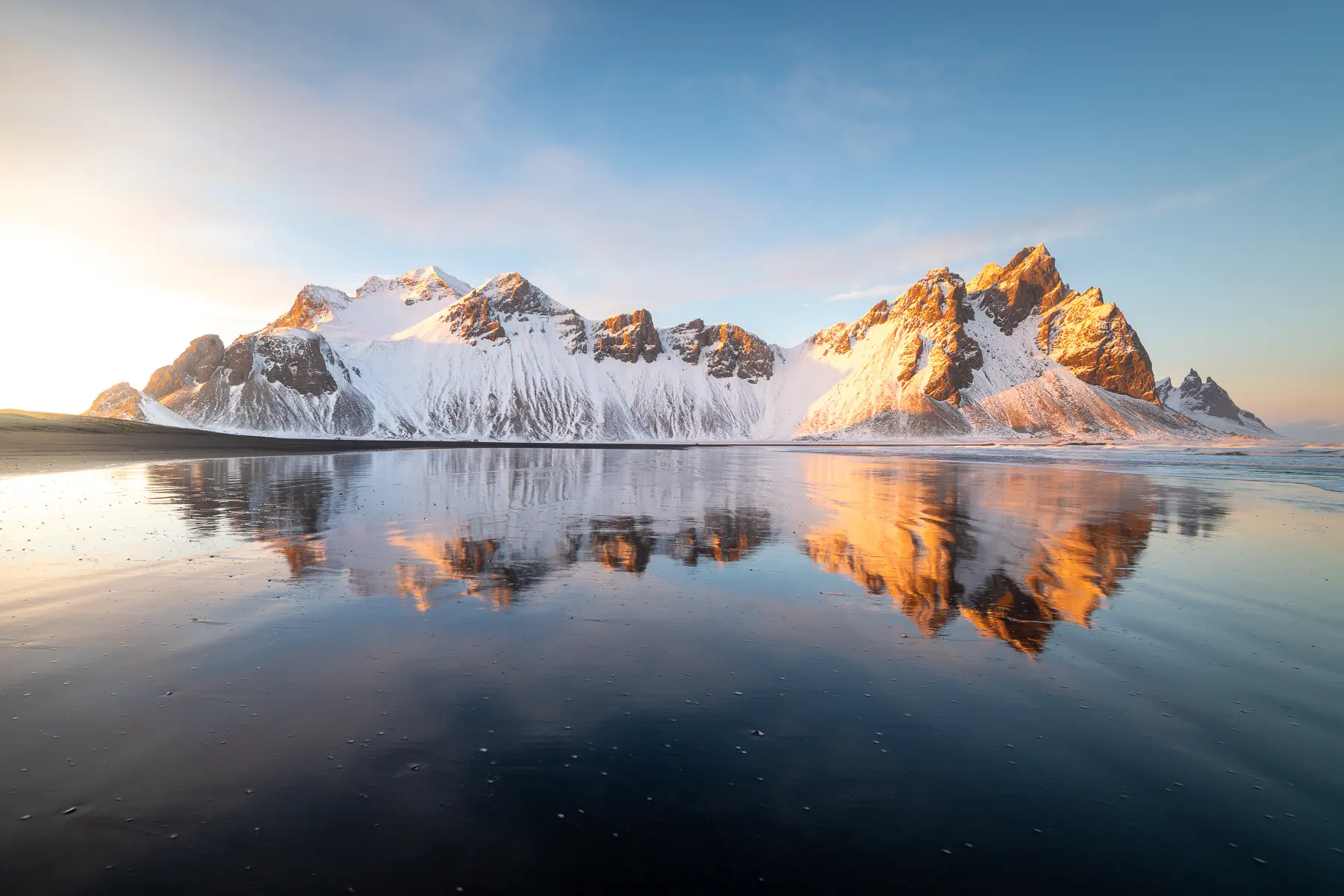
The sun sets on Vestrahorn in southeastern Iceland.
travel photography Published